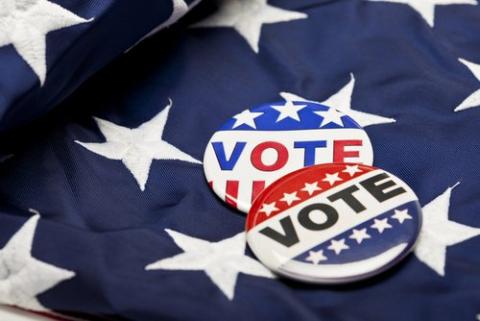Six Republican candidates have launched campaigns for the 2024 presidential primary, and there are still over a dozen potential candidates that could enter the race. Citizen Data asked voters, “in such a crowded field would you like to rank your choices?”
61% of poll respondents said they were at least “somewhat interested” in the option, including the same percentage of Republican respondents.
“Ranked choice voting (RCV) solves problems in presidential primaries – it’s no surprise that voters are interested in ranking candidates by more than a two-to-one margin,” said Deb Otis, Director of Research and Policy at FairVote.
FairVote, a nonpartisan better elections advocacy group, is the nation’s largest supporter of RCV. .The group collaborated with Citizen Data to conduct the poll of 1,001 registered US voters.
“RCV is a better way for voters to unite behind strong nominees in crowded primaries,” continued Otis.
“And in 2020, over three million early voters cast ballots for Democratic presidential candidates who then withdrew by their state’s primary day; the same thing happened to 600,000 Republican voters in 2016. With RCV, if a voter’s first choice drops out, their ballot simply counts for their next choice.”
RCV gives voters the option to rank candidates in order of preference and if a candidate does not have a majority of voters’ first choices, an instant round of runoff is held that eliminates the last place candidate and their voters’ next selection is applied to the vote tabulation.
This process continues until a candidate has crossed over 50% of the vote. The voting method has been adopted in over 60 jurisdictions, including areas dominated by Republicans and Democrats. Alaska uses it for state elections, as does Maine.
It has also been used by both parties in a handful of states to select their nominees for general elections and party leadership. The Democratic Party used RCV in 4 presidential primary contests in 2020.
RCV advocates say the reform offers several benefits to presidential primaries:
It can address the millions of wasted votes each election cycle for candidates who have dropped out of the race, it gives voters more freedom to express their true preferences, and it can result in more representative allocation of party delegates.
In crowded candidate fields it is likely that in several contests the winner of the primary doesn’t need to get a majority of the vote to be declared the winner and take the lion's share of delegates.
Donald Trump, for example, garnered 45% of the total 2016 primary vote and several states were declared for him despite not winning majority support (sometimes not even close). The same can be said for other candidates like Ted Cruz and Marco Rubio.
This would not happen under RCV.
Not only would RCV guarantee a winner crosses 50 percent of the vote, but it could also boost more candidates above the vote threshold needed to be allocated delegates (typically 15%<), ensuring more voters affect the outcome and are heard.
Critics and opponents of RCV reform say the voting method is too complicated for voters to understand, but evidence points to the contrary. In case after case after case, exit polling shows voters have found voting under RCV to be simple, fair, and easy.
Citizen Data’s polling shows that interest in RCV not only exists across party lines, but social demographics as well, including age, ethnicity, and education level.
